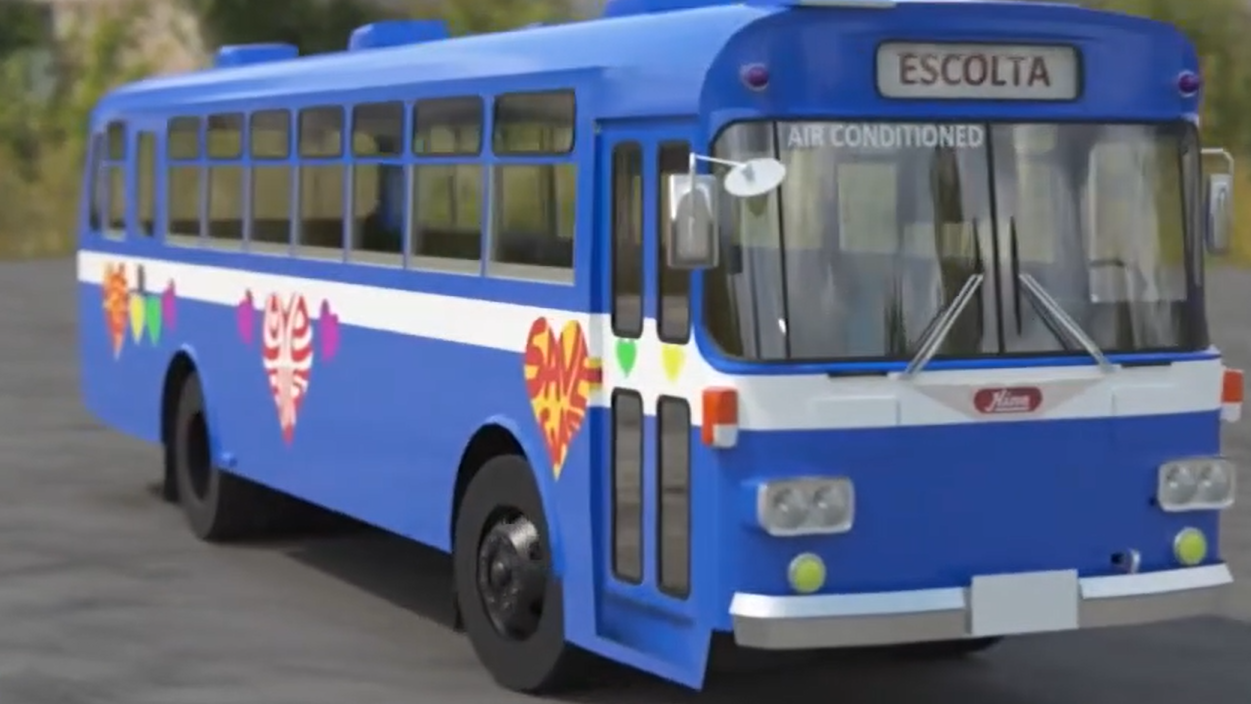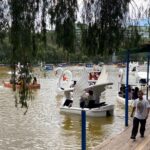President Ferdinand “Bongbong” Marcos Jr. announced that the iconic Love Bus would make a comeback.
Marcos made the announcement during his fourth State of the Nation Address, stating that this service will be free for commuters. In 2023, the public transport was operational in the City of Makati.
“Let me ask some of you… Do you remember the so-called ‘Love Bus’? It was the popular public bus in Metro Manila that began in the 1970s,” Marcos said.
“Today, we are not just bringing back the Love Bus—we are making it free. Initially, pilot testing will be in Davao and Cebu. This will be followed by other areas in Visayas and Mindanao,” he added.
The Love Bus was introduced on several Metro Manila routes in the 1970s and was the only air-conditioned bus service at the time.
It stopped operating after several years as it was no longer considered profitable.
Love Bus
The **Love Bus** is a colorful, art-covered bus that originated in the 1970s as part of the hippie counterculture movement, symbolizing peace, love, and freedom. It gained fame through its association with Ken Kesey and the Merry Pranksters, who used it for cross-country trips promoting psychedelic experiences and communal living. Today, it remains an iconic symbol of 1960s-70s idealism and has been preserved as a cultural artifact of the era.
Davao
Davao is a major city in the southern Philippines, known as the economic hub of Mindanao. Founded in 1848 as a Spanish settlement, it later grew under American colonial rule into a thriving urban center. Today, it is famous for its cultural diversity, natural attractions like Mount Apo (the country’s highest peak), and its vibrant festivals such as Kadayawan.
Cebu
Cebu is a vibrant province in the Philippines, known as the country’s oldest city and the first Spanish settlement, established in 1565. It is famous for its historical landmarks, such as the Basilica del Santo Niño (the oldest Catholic church in the country) and Magellan’s Cross, which mark the arrival of Christianity in the Philippines. Today, Cebu is a bustling hub of culture, trade, and tourism, blending rich colonial heritage with modern urban life.
Visayas
The Visayas is a central region of the Philippines, consisting of several islands, including Cebu, Bohol, and Leyte. Known for its rich history, it was a key area during Spanish colonization, where the first Christian settlement was established in Cebu in 1521. Today, the Visayas is celebrated for its vibrant festivals, stunning beaches, and cultural heritage, blending indigenous traditions with colonial influences.
Mindanao
Mindanao is the second-largest island in the Philippines, known for its rich cultural diversity and natural beauty. It is home to indigenous groups like the Lumad and the Moro people, whose histories reflect centuries of resistance against colonization. The region also features landmarks such as Mount Apo, the country’s highest peak, and historic sites tied to Islamic and Spanish colonial influences.
Metro Manila
Metro Manila, the bustling capital region of the Philippines, is a densely populated metropolitan area comprising 16 cities and one municipality, including Manila, Quezon City, and Makati. Established in 1975, it serves as the country’s political, economic, and cultural hub, with a rich history dating back to Spanish colonial rule in the 16th century. Known for its vibrant urban life, historical landmarks like Intramuros, and modern skyscrapers, Metro Manila reflects a blend of tradition and rapid development.
City of Makati
The City of Makati is a major financial and commercial hub in Metro Manila, Philippines, known for its towering skyscrapers, upscale shopping centers, and vibrant business districts. Originally a small agricultural town, it rapidly developed in the mid-20th century under the influence of wealthy families and international corporations. Today, Makati is also home to cultural landmarks like the Ayala Museum, which showcases Philippine history and art.





